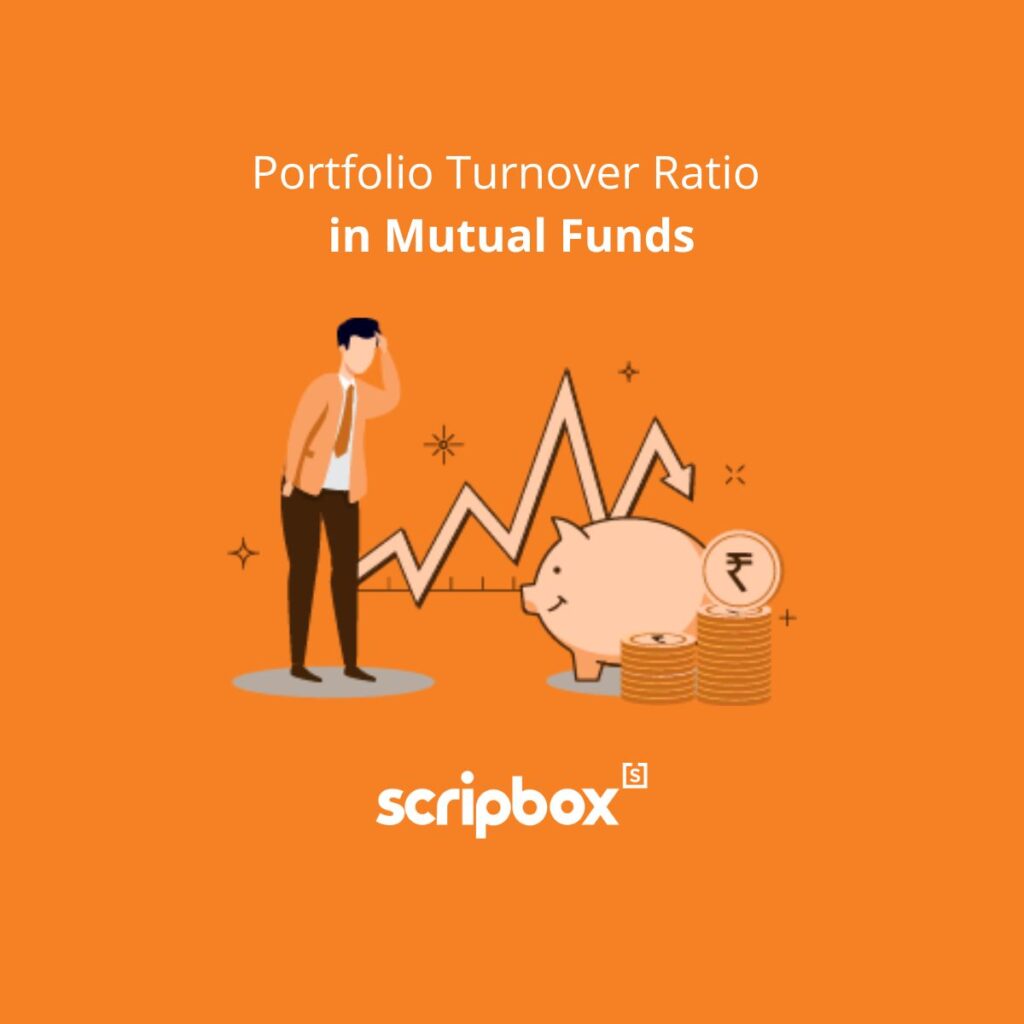What is Portfolio Turnover Ratio?
The Portfolio Turnover Ratio or PTR indicates the rate at which the fund managers buy or sell portfolio holdings of a mutual fund. In other words, the portfolio turnover ratio shows the percentage change of assets in a mutual fund over one year. Also, this ratio is expressed in the form of a percentage. Therefore, PTR gives an idea about the overall fund management style.
You can also understand the functioning of a mutual fund by looking at the portfolio turnover ratio. Moreover, this ratio is available in the monthly fact sheet of the mutual fund scheme.
How to Calculate Portfolio Turnover Ratio?
It is a very simple method to determine the portfolio turnover ratio. To calculate this ratio, you can consider the minimum number of securities either purchased or sold (whichever is lesser) and divide it by average assets under management (AUM). The securities and also AUM should be of the same period. Also, the time horizon can be monthly or yearly.
Formula
Portfolio Turnover Ratio = Minimum securities bought or sold / Average AUM of the fund.
Example
Suppose for an ABC equity mutual fund; the fund manager purchases stock worth Rs. 300 crores and sells stocks worth Rs. 400 crores. The average AUM of the fund is Rs. 1200 crores. The portfolio turnover ratio is –
PTR = Rs. ( 300 / 1200) crores = 25%
Therefore, the portfolio turnover ratio of the fund is 25% which indicates that one-fourth of the portfolio securities were traded.
Interpretation of Portfolio Turnover Ratio in Mutual Fund Investment
The portfolio turnover ratio is one of the important metrics for mutual fund investment
- The PTR provides clues about the investment strategy that the fund manager uses to generate returns. Also, a low PTR indicates a buy-and-hold strategy where the fund manager is confident about the security purchases. Furthermore, he holds these securities for a fixed time horizon. Therefore, the fund will have a low expense ratio owing to the low transaction costs. Sometimes, the lower ratio also could be due to the fund category.
- For passive mutual funds, the fund manager merely matches the fund portfolio composition with the benchmark index. As a result, there is a low portfolio turnover ratio due to low trading activity. On the other hand, funds with high PTR show aggressive trading activity.
- For active mutual funds, the fund manager follows an active investing strategy where he buys and sells securities to take advantage of the changing market situations. Also, aggressive trading activity results in a high expense ratio. Therefore, funds with dynamic asset allocation will relatively have a high expense ratio.
- The level of portfolio turnover ratio depends on the market conditions. During the volatile market, the fund manager will hold tight and keep the ratio low. On the other hand, when the market rallies, it encourages the fund manager to indulge in trading, which increases the PTR. Hence, the fund manager keeps trading to maintain the ideal portfolio returns rate.
- The continuous trading activity involves transaction costs. Also, this cost is added to the expense ratio, which often affects the mutual fund portfolio returns. Furthermore, investors tend to face losses in capital due to higher expense ratios. As a result, they end up paying higher management costs without getting good returns.
High vs Low Portfolio Turnover Ratio in Mutual Funds
The High vs Low Portfolio Turnover Ratio helps to understand the fund’s activities.
| Parameters | High PTR | Low PTR |
| Churning | There is a high frequency of buying and selling of portfolio holdings over a time period. | There is low frequency of buying and selling of portfolio holdings over a time period. |
| Cost | A higher PTR has higher transaction costs making the fund management expensive. This cost has a direct impact on the fund returns. | A lower PTR has low transaction costs and makes fund management less expensive. The fund returns are not much affected by the management cost. |
| Expense Ratio | High | Low |
| Type of scheme | High PTR is more common for actively managed funds. | Low PTR can be a strategic decision or common for passively managed funds. |
| Investment strategy | A relatively more aggressive strategy due to high churning of securities. | A buy and hold strategy for the portfolio. |
| Market condition | Market volatility becomes a reason for high turnover for securities. | This situation reflects the fund manager’s confidence to buy and hold securities. |
To conclude, investors must understand all factors that influence mutual fund portfolio returns. Also, PTR should be used with other ratios while analysing and comparing mutual funds. Certainly, each investor has their own investment objective, investment horizon and risk tolerance levels. Therefore, a portfolio turnover ratio helps the investor to choose the investment option by balancing their risk tolerance level with the fund’s risk level.
Discover More
- What is Portfolio Turnover Ratio?
- Confused if your portfolio is performing right enough to meet your goals?
- How long have you been investing in mutual funds?
- What is your current portfolio size?
- What is your approximate annual household income?
- Your profile does not qualify for a call with a Financial Expert.
- How to Calculate Portfolio Turnover Ratio?
- Interpretation of Portfolio Turnover Ratio in Mutual Fund Investment
- High vs Low Portfolio Turnover Ratio in Mutual Funds
